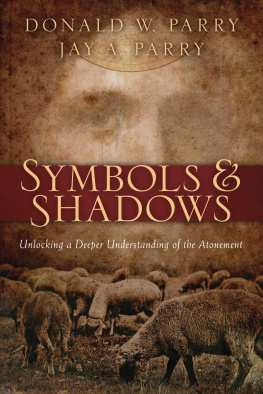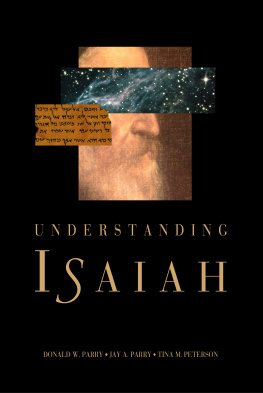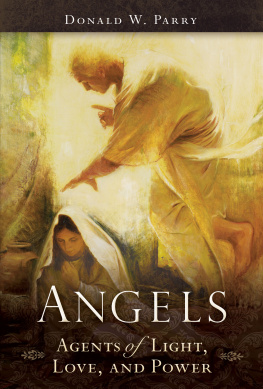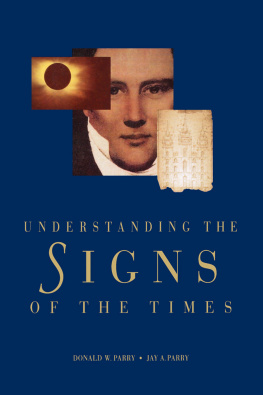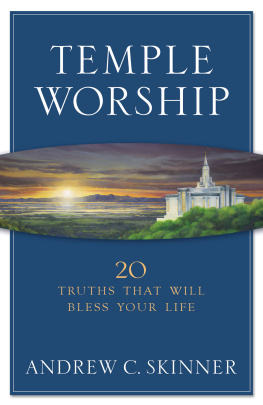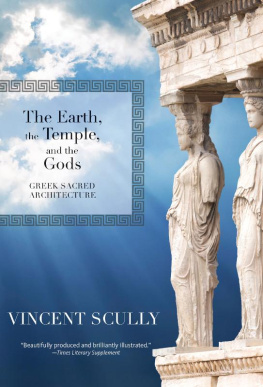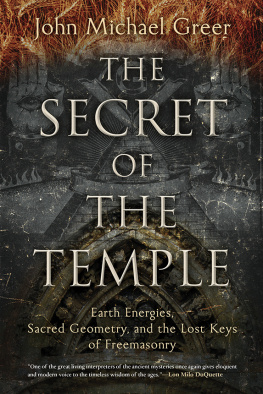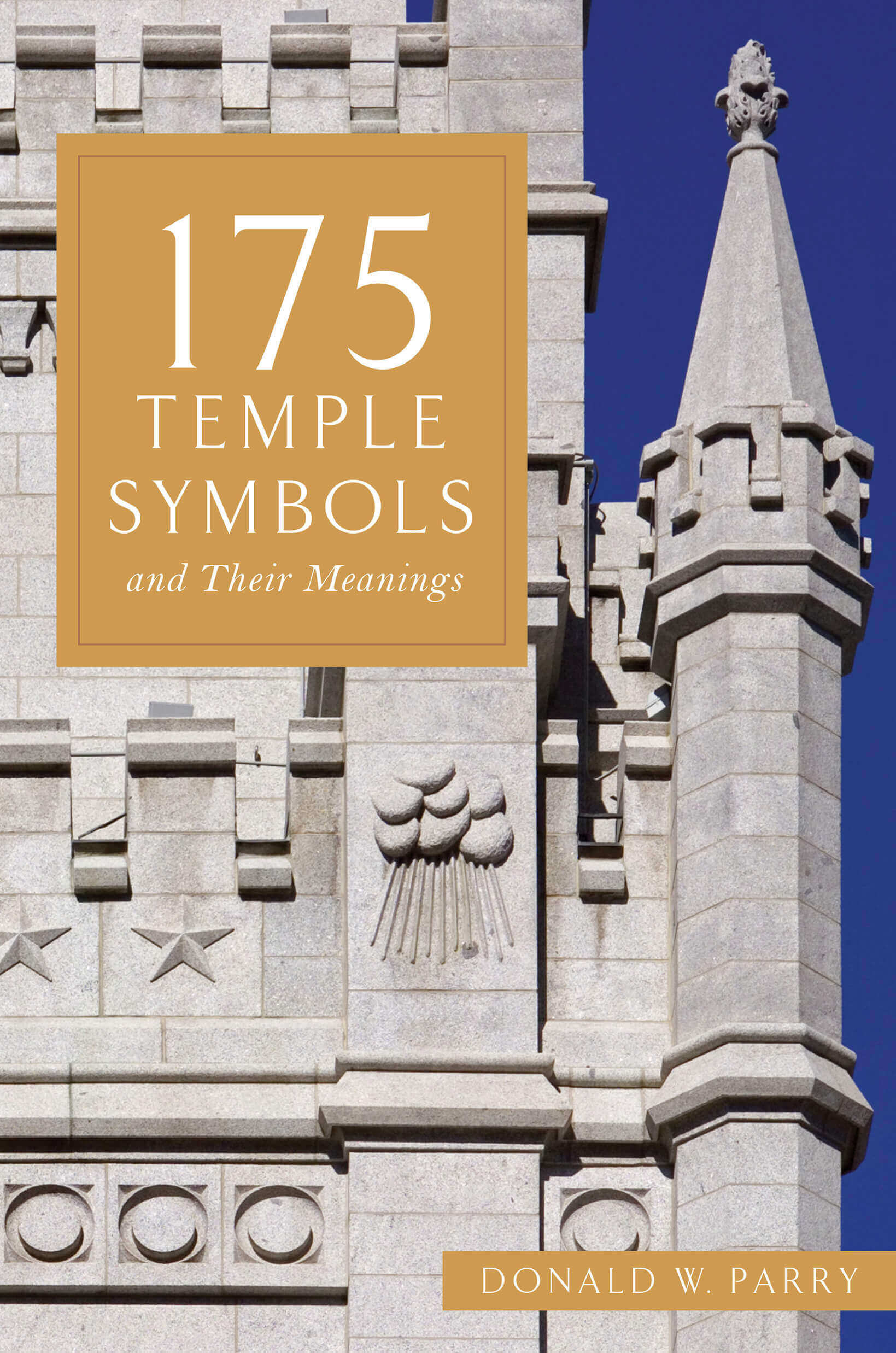I extend appreciation to many individuals who have contributed in a variety of ways to this volume. Lisa Roper, Deseret Book product director, has exerted masterful skills as she has helped me advance the book through its various stages. I am extremely grateful to Tracy Keck, editor at Deseret Book, for her significant skills and expertise; her proficient work has greatly improved the manuscript! Four individualsRichard O. Cowan, Debra Theobald McClendon, Rebecca Poulter, and Zachery Poulterhave provided me with several remarkable insights and comments! Professor Richard O. Cowan is a well-known Latter-day Saint scholar who specializes in temple studies. I thank the anonymous individuals who reviewed the manuscript to determine that the content of this volume was appropriately presented, owing to the extremely sensitive and sacred nature of the temple. I also appreciate the efforts of BYUs editorial team: Suzy Bills, director, and Scarlett Lindsay, managing editor. I am also grateful to my student researchers Michael A. Goodman and Bethany Davis for source checking the hundreds of footnotes and scriptural passages.
Introduction
Regarding the symbolism of the temples of The Church of Jesus Christ of Latter-day Saints, President Russell M. Nelson taught us that each temple is a house of learning. There we are taught in the Masters way. His way differs from modes of others. His way is ancient and rich with symbolism. We can learn much by pondering the reality for which each symbol stands. Teachings of the temple are beautifully simple and simply beautiful. They are understood by the humble, yet they can excite the intellect of the brightest minds.
This volume constitutes an introduction to the temple and its symbols; it is no more and no less than a beginners guide toward understanding various components associated with the temple. As a beginners guide, the volume is not designed to provide advanced understanding of the temple and its symbols. Those who want advanced understanding must attend the temple often and receive instruction from the Holy Ghost. The temple itself, together with divine instruction from the Holy Ghost, encompasses the quintessential and ultimate learning experience regarding the temple.
This volume sets forth 175 entries, which provide notes or explanations of various symbols and insights regarding ancient and modern temples. Many of these insights constitute my own ideas and should not be regarded as doctrine or teachings of The Church of Jesus Christ of Latter-day Saints. Stated differently, many of the proposed symbols in this book are simply that: proposals, suggestions, or items that may be considered. Listed in alphabetical order, the entries deal with a broad range of categoriesrituals and ordinances, gestures of approach, sacred vestments, sacrificial offerings, geometric symbols, colors, heavenly bodies (sun, moon, stars), prayer and revelation, sacred names, furnishings and appurtenances, animals, religious festivals, and sacred spaces. When appropriate, I have identified symbols and concepts that deal with Jesus Christ and His atoning sacrifice. In point of fact, Jesus Christ is prominent throughout the templeancient and modernand a significant portion of the 175 entries pertain to Him.
This book is topical but not encyclopedic in nature. It is not at all comprehensive and does not deal with every possible topic of the temple. A comprehensive work on the temple would fill multiple volumes. One may say, borrowing a line from Words of Mormon 1:5, I did not write the hundredth part of the things of the temple. Rather, by careful selection and choice, the book is at best representative, and it therefore contains typical examples of various aspects and components of the temple. And each of the 175 entries is briefly presented, to put it mildly; in fact, many of the entries provide no more than a glimpse of what could be written about that particular topic.
Importantly, restraint and caution should always be used when referring to temples and sacred topics. For this reason, I have not dealt with topics that are inappropriate to discuss outside of the temple; in fact, I have erred on the side of caution as I deal with the topics in this volume. I hold strictly to Elder David A. Bednars two guidelines regarding what we may say regarding temples of The Church of Jesus Christ of Latter-day Saints. Guideline #1: We should not disclose or describe the special symbols associated with the covenants we receive in sacred temple ceremonies. Neither should we discuss the holy information that we specifically promise in the temple not to reveal. And Guideline #2: We may discuss the basic purposes of and the doctrine and principles associated with temple ordinances and covenants.
SymbolsGods Favorite Way of Teaching
It is a certainty that symbols penetrate the whole of the temple and its ordinances. In point of fact, God teaches with symbols, wrote Elder Orson F. Whitney. It is his favorite method of teaching. Symbols embrace the following temple components (belonging to ancient and/or modern temples): verbal-ceremonial communications, sacred vestments, ceremonial movements and gestures, sacred architecture, covenant making, the actual words of the covenants, various material items (anointing oil, ablutionary water, blood, shewbread, sacrificial animals, incense, and more), officiants (having proper authority), and the ordinances themselves.
By way of example, a number of symbols are attached to the ordinance of baptism. These include some of the baptismal words that are uttered by the baptizer, a ceremonial gesture (right arm to the square), two ceremonial movements (the acts of immersion and coming forth out of the watersboth acts involve the baptizer and the baptismal candidate), the mass of water in the font, white clothing, and the baptismal font itself.


